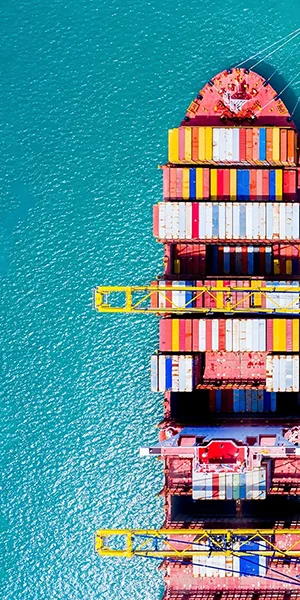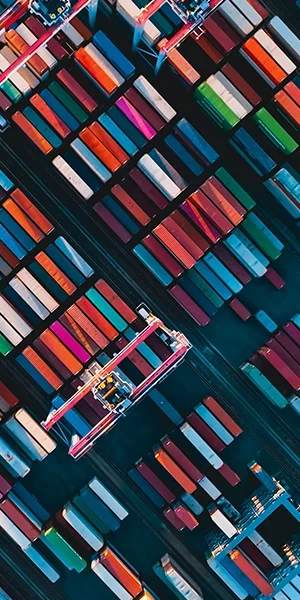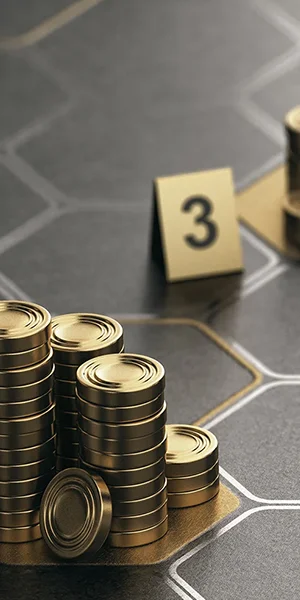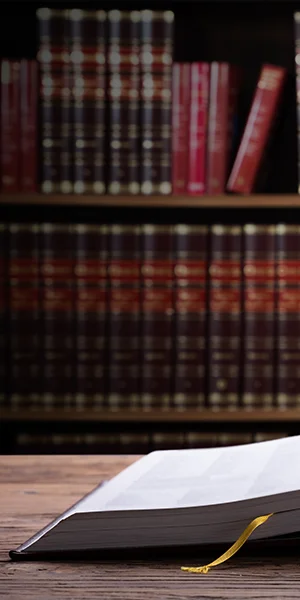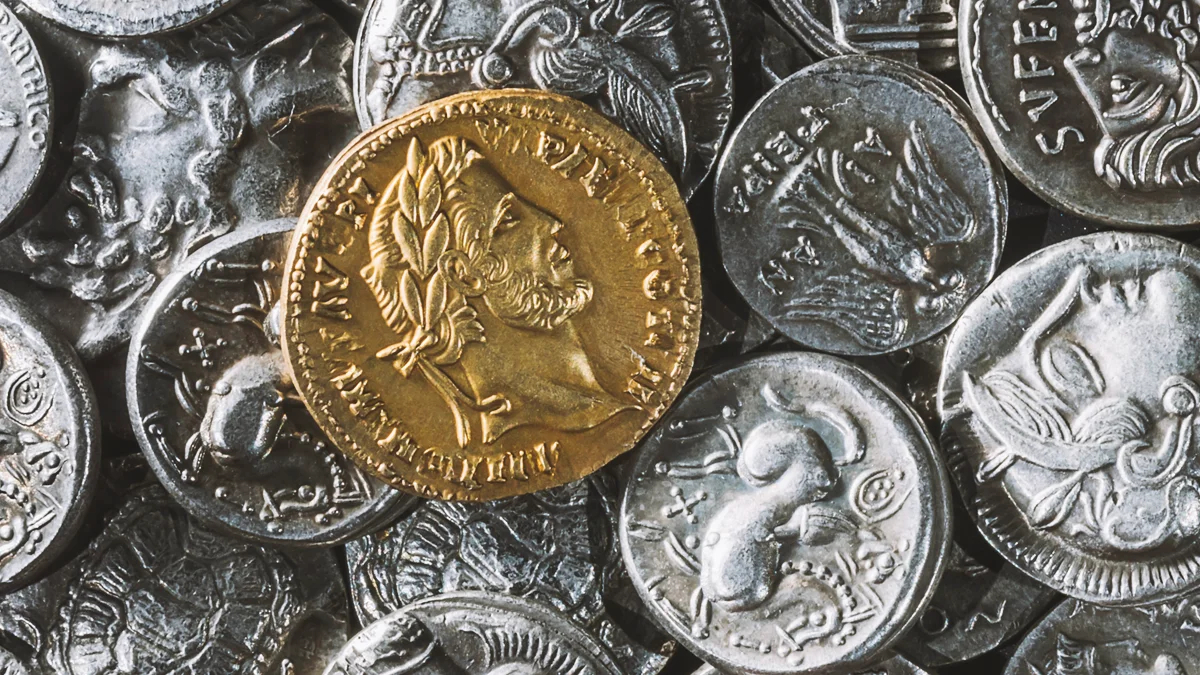From the ancient civilisations in Egypt, Mesopotamia, and Greece to the Han Dynasty in China, the Aztecs in Mesoamerica, and the Incas in South America, gold has symbolised wealth and power. It has also been a preferred medium of exchange since the Roman era. That is because, as first described by Aristotle, gold satisfies the four criteria money should possess: durable, portable, divisible, and intrinsically valuable.
On the other hand, paper money is generally more portable and easier and cheaper to produce. However, those attributes come with a tradeoff: The intrinsic value of fiat currencies is not assured. Conversely, gold retains and maybe even grows in value during periods of economic instability. That’s why governments, financial institutions, and individuals continue to hold and trade gold as a hedge against currency deflation.
Today, most gold, not held as a monetary reserve or “safe haven,” is used to make jewellery. It is also used, albeit in lesser quantities, in dental crowns, electronic devices as a conductor, and spacecraft to shield astronauts from heat and radiation.
Like gold, the quest for silver fuelled trade and conquest, shaping the destiny of nations and the global economy. Its radiant sheen and malleability made it indispensable in crafting coins, tableware, and jewellery.
While silver is still used in coins and jewellery, its malleability and high electrical conductivity make silver an ideal component in solar panels, nuclear reactors, medical imaging devices, antibiotics, batteries, electrical switches, and semiconductors.
Platinum is a relative newcomer; it was only isolated as a distinct metal in the early 19th century. In fact, ancient civilisations often mistook it for silver and European explorers considered platinum an undesirable impurity in their silver mining operations.
However, once isolated and studied, scientists discovered that platinum is highly resistant to corrosion and has an extremely high melting point.
Platinum is one of the rarest precious metals, and its price often exceeds gold’s. Its bright lustre and tarnish resistance make it a popular choice for wedding rings and other fine jewellery. Platinum is also critical in catalytic converters, oil refining, and computer storage devices.
Uniquely important in Asia
Precious metals have long played a prominent role, culturally and economically, across Asia.
Gold, in particular, is firmly embedded in the culture of many Asian countries, symbolising wealth, purity and prosperity. It is essential in religious rituals, weddings and festivals. Gold jewellery is also a traditional wedding gift passed down through generations as family heirlooms. Temples throughout Asia also frequently feature gold and silver ornaments and statues, underscoring their spiritual significance.
At the same time, buying and holding gold to maintain wealth is a practice deeply ingrained in the financial strategies of many Asian families, businesses and governments. In fact, while increasingly esoteric financial products dominate investment strategies in Western countries, many Asians prefer to invest in physical gold, including coins, bars, and jewellery.
This continuing preference for tangible assets over complex financial instruments is perhaps attributable to the fact that many Asian countries went from being quite poor to relatively affluent in a short time. In the early 1950s, for instance, South Korea was one of the poorest countries in the world. Today, it ranks approximately 34th globally in GDP per capita, behind several European nations and high-income countries but ahead of many others.
However, rapid economic growth also contributed to periods of financial volatility, including currency devaluations and high inflation. Under these conditions, gold is preferred as a more stable alternative to cash. That is still true today, and many households and businesses own gold to hedge against inflation and economic instability. Several Asian countries also recognise the historical importance of gold and hold substantial amounts in their central bank reserves to ensure economic stability and boost confidence in their currencies.
Varied threats
Like other commercially valuable assets, appropriate precautions need to be taken to minimise and mitigate the various risks to precious metals as they move through the value chain—from the mine where they are extracted, to the refinery where they are processed, to the manufacturers/designers where they are cast, forged, stamped or machined, and to the wholesalers, retailers, and end users who transport and hold the finished goods.
For example, fires are an ever-present risk. Notwithstanding precious metals’ high melting points, the temperatures reached in building fires can quickly exceed their thresholds. Also, smoke, soot, and chemical residues can tarnish or corrode metal surfaces, diminishing their appearance and value. Thus, precious metals should be stored in fire-resistant safes or vaults whenever possible.
Then there is theft. Easily tradeable commodities like gold and silver make tempting targets for opportunistic thieves, and anyone holding even small quantities must take adequate precautions to safeguard them. While theft has always been an ever-present risk, new uses of some precious metals have introduced a new target: catalytic converters.
These innocuous devices hold a treasure trove of precious metals like platinum, palladium, and rhodium, and due to their scarcity and high demand, prices have skyrocketed. This threat has become particularly acute in China, Japan, and South Korea, countries where automotive manufacturing is a significant industry and home to many vehicles. In response, law enforcement agencies in these countries have launched targeted campaigns to deter criminals and apprehend those responsible.
Fraud is another emerging risk, especially in India and China, the world’s largest and second-largest consumer markets for gold. Prices remain high, and markets for buying and selling different types of gold are plentiful. At the same time, advances in 3D printing and related technologies have given counterfeiters sophisticated tools for replicating the appearance of genuine bullion, coins and similar items. Given this emerging threat, AXA XL requires that all precious metals we insure be certified by reputable assayers.
Protecting what is precious
Specie insurance is a form of specialised insurance designed to protect high-value, portable items such as bullion, gemstones, fine art, cash and other valuable commodities. The coverage is usually comprehensive, i.e., it applies whether the objects are in the owner’s possession, at a third-party location, on display, in storage or in transit. The policies can also be tailored to protect the overall supply chain, from those producing the items to the retailers selling them to the customers purchasing them.
Coverage under a Specie policy is usually provided on an all-risks basis of physical loss or damage, with policy wordings tailored to the client’s unique requirements. The core covered risks include losses from natural perils like fire, flood, earthquake and windstorm, and non-natural causes like theft or employee dishonesty.
Financial protection isn’t the only benefit of an all-risk Specie policy. Consistent with the maxim that prevention is the first priority, many established Specie insurers, including AXA XL, work with their clients—businesses and individuals—to identify and implement practical, cost-effective solutions for minimising the risks. That includes advising on safety, security and storage issues, providing guidance on valuation, and reviewing transportation contracts to lessen contingent risks.
The enduring role of precious metals throughout human history has shaped societies, economies, and cultures in myriad ways. As new uses emerge, the dynamics surrounding these materials will continue to evolve. AXA XL is one of the leading Specie (re)insurers in the Asia-Pacific region, with dedicated Specie underwriters offering high underwriting capacity, as well as knowledgeable claims handlers, and experienced risk consultants. We remain committed to supporting clients across the value chain in preserving and protecting these valuable assets.






